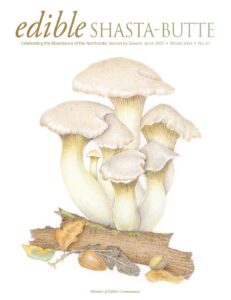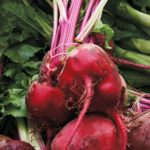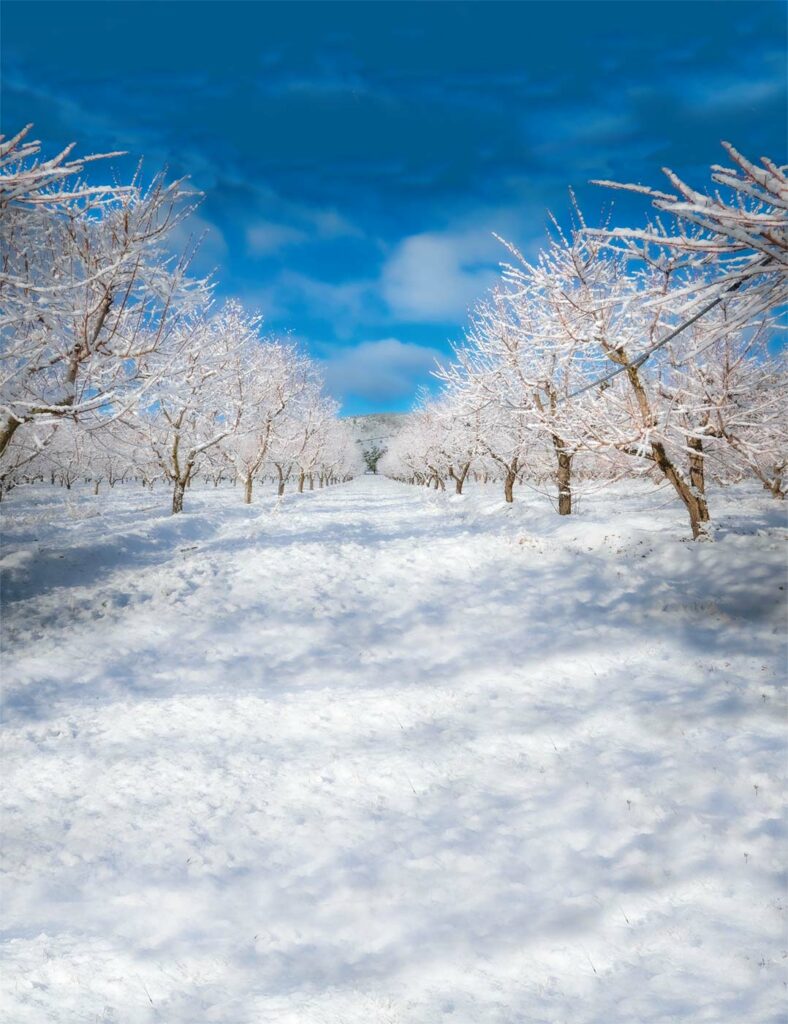
Yes, the trees are dormant and bare of leaves, but so much work needs to be done.
Winter slumber is vital to an orchard. Orchards need winter chill, their form of rest, to prepare and store energy for the upcoming fruit season.
It may be a surprise to learn that the winter months leading up to spring are a storm of activity at Hunter Orchards and any orchard, for that matter. Yes, the trees are dormant and bare of leaves, but so much work needs to be done. While the winter months are an excellent opportunity to do special projects around the farm, pruning comes crashing down on top of us as we prepare for the orchard to bloom in the spring.
Opinions vary on when to start pruning, but we find that winter or dormant season pruning generally promotes vigorous re-growth and that spring pruning often slows growth. This can get controversial and goes against most advice as to when to prune stone fruit, but we have found winter the best time of year to prune our peaches, nectarines, and apricots, along with our apples and pears. I will admit, I start pruning the apple and pear trees first and then get to the stone fruit in late winter as temperatures rise.
Whether you are growing a peach tree or apples and pears, most fruit trees require the same care to prepare for the cold. Each year we remove as much as 30 to 40% of a tree’s growth. It may sound like a lot, but pruning peach, nectarine, apricot, pear, and apple trees is vital to their health and productivity. We start the process by removing dead branches from the tree and the orchard floor. Deadwood tends to rot when exposed to moisture and air, so removing it before the ground freezes helps prevent decay.
Each year we remove as much as 30 to 40% of a tree’s growth. It may sound like a lot, but pruning peach, nectarine, apricot, pear, and apple trees is vital to their health and productivity.
Next, we prune the trees. We start on the inside and work down and out to let sunlight through and ensure proper airflow. Pruning allows us to balance the crop load on the trees to deliver high-quality fruit in better sizes. Pruning also helps the tree mature correctly. We do a lot of lateral pruning, which is a technique that involves selectively taking out interior branches. Lateral pruning removes weak limbs crossing and rubbing against each other or not contributing to sound structural development. The orchard will change with or without my guidance. Pruning is one way of having a say in the matter. I also think of the appearance of each individual tree and its impact on the look of our orchard. I like the orchard to be both as productive and as beautiful as possible.
Pruning a single tree takes at least thirty minutes, and with over 1200 mature peach trees in the orchard, minutes add up quickly. Also, we sharpen and disinfect the shears with isopropyl alcohol after every tree, which helps prevent the spread of disease or bacteria. Of course, if we find any infected wood, which is rare, we prune it entirely out and burn it. We do not use electric pruning shears, as they are heavy and awkward. New trees need to be pruned as well. The baby trees are significantly easier to prune, which is nice.
With all trees pruned, we are in a great position as they wake up from their winter slumber and come into bloom. Winter slumber is vital to an orchard. We get a lot of questions about how winter affects our trees. Orchards need winter chill, their form of rest, to prepare and store energy for the upcoming fruit season. The winter chill is the hours the temperatures fall between 32 to 45 degrees for apples or pears or 35 to 55 degrees for summer fruit. One hour equals one chill hour. Orchards with proper chill produce a more flavorful and higher quality crop. Honestly, while I track the chill hours through a hand app on my phone, I never worry about getting the proper amount. Shasta Valley gets enough of those, and snow, which we love, helps to get the required chilling hours. The snow is also terrific at restoring groundwater for spring and summer.

Pruning a single tree takes at least thirty minutes, and with over 1200 mature peach trees in the orchard, minutes add up quickly.
The orchard will change with or without my guidance. Pruning is one way of having a say in the matter.
Essentially, a long winter is suitable for the orchard. I worry more about late cold. We must deal with frost damage if frost hits after the trees bloom. Frost damage can lead to a cascade of events inimical to the tree, starting with decreased pollination, leading to a low yield with smaller fruit. Trees are most susceptible to damage in the late winter, just before spring, when days tend to warm above freezing, and nighttime temperatures fall below it.
We do not fertilize our trees in the winter. Fertilizing the trees at this time of year is just a waste of money. Protecting your trees for the whole winter requires them to get to dormancy quickly. Fertilizing, especially with nitrogen-heavy fertilizers, prevents this from happening. If the trees are dormant promptly, there is little need to worry about avoiding freeze damage for cold-hardy trees.
I also do many activities on the farm at the same time I am pruning. I remove the drip lines from our pumpkin patch and move them up the orchard to be ready when the trees need water. I continuously weed badger the orchard to prevent weeds. As we are an organic farm, weeding takes on a challenge. We are not watering during this time of year, but we occasionally get weeds popping up due to rainfall and snow. We use a weed badger that connects to our tractor to remove weeds, mechanical techniques and not harsh chemicals. Really, as an organic operation, we do this all year long.
I also winterize the irrigation system, which consists of a blow-out method of ridding all the water from all the irrigation components. If this doesn’t happen, the water will freeze and cause damage to the underground pipes, pumps, valves, and other parts of the system. I also plant our cover crop for the pumpkin and squash acreage. A cover crop ensures that I enrich the soil to increase microbial diversity, increase productivity, and build climate resilience. As a result, ecosystem health is restored, and landscapes remain sustained for future generations that will farm this land.
We have experimented with a few cover crops since we owned the farm, but we find rye the best. It is an excellent winter cover crop, because it rapidly produces a ground cover that holds soil in place against the forces of wind and water. Rye’s deep roots help prevent compaction in annually tilled fields, and because its roots are extensive, rye also has a positive effect on soil tilth.
While I am on the farm, my wife, Julie, saves seeds from the pumpkins and squash that remain from our fall harvest, ensuring we have enough seeds for next year’s pumpkin patch. We require about 8,000 seeds for our two-acre patch, then another 8,000 squash seeds—so, Julie collects a lot of seeds and dries those seeds in our greenhouse, getting them prepped and labeled to start in May or go directly into the ground first week of June.
We were very humbled by the number of families that came out to enjoy the fall season and pumpkin patch with us this year. Coming out to the Hunter Orchards pumpkin patch supports our local family business and other small local farmers and purveyors who offer their crops and goods at our open market barn store. We truly appreciate all who come. We promise to do everything we can to make even more improvements so that visits are more enjoyable next year, beginning with Julie’s seed saving and drying.
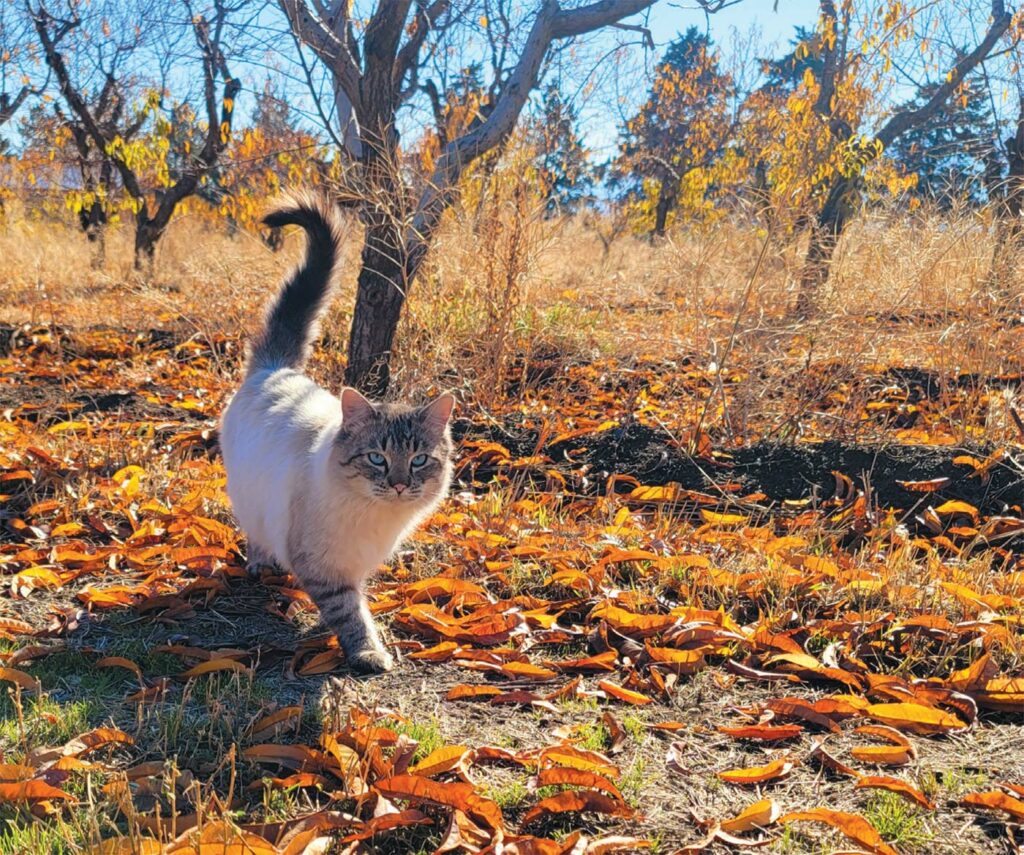
We want to encourage small gardens and big ones as well. They give people, especially children, the opportunity to learn where their food comes from and how to grow food with their own two hands. Gardens keep people healthy by providing outside time, a connection to the land, exercise, and fresh food. We want to do our part to keep gardens blooming in Siskiyou County.
Julie also clears out our greenhouse and high tunnel to get it prepped and ready for our plant starts and row crops. Next year, in response to many customer inquiries, we will be growing more plant starts and offering them to the community through various outlets, including our spring plant start event that will take place in May. This will be our first year providing starts to the community, so we are excited about this event. Stay tuned in early spring for more information on the event date and other outlets you can find Hunter Orchards’ organic starts. We are fortunate enough to have a greenhouse, which gives us an extra month or so during the growing season. We use the high tunnel to start hardening off the plant starts as well as for storage once the weather permits. We want to encourage small gardens and big ones as well. They give people, especially children, the opportunity to learn where their food comes from and how to grow food with their own two hands. Gardens keep people healthy by providing outside time, a connection to the land, exercise, and fresh food. We want to do our part to keep gardens blooming in Siskiyou County.
So, as we settle into the dormant season (for the trees, at least!), now is the perfect time to start our winter orchard and farm care routine. I am lucky to continue to be out in the fresh air working in the orchard and on the farm I love. Preparing our orchard for winter ensures Hunter Orchards will continue to offer our community the best tasting, highest quality fruit. So, I lace up my waterproof boots and dig out my warmest gloves because I start pruning the trees the day after Thanksgiving and don’t stop until bud break. Taking care of our fruit trees all year round ensures we have healthy trees that can live for decades.
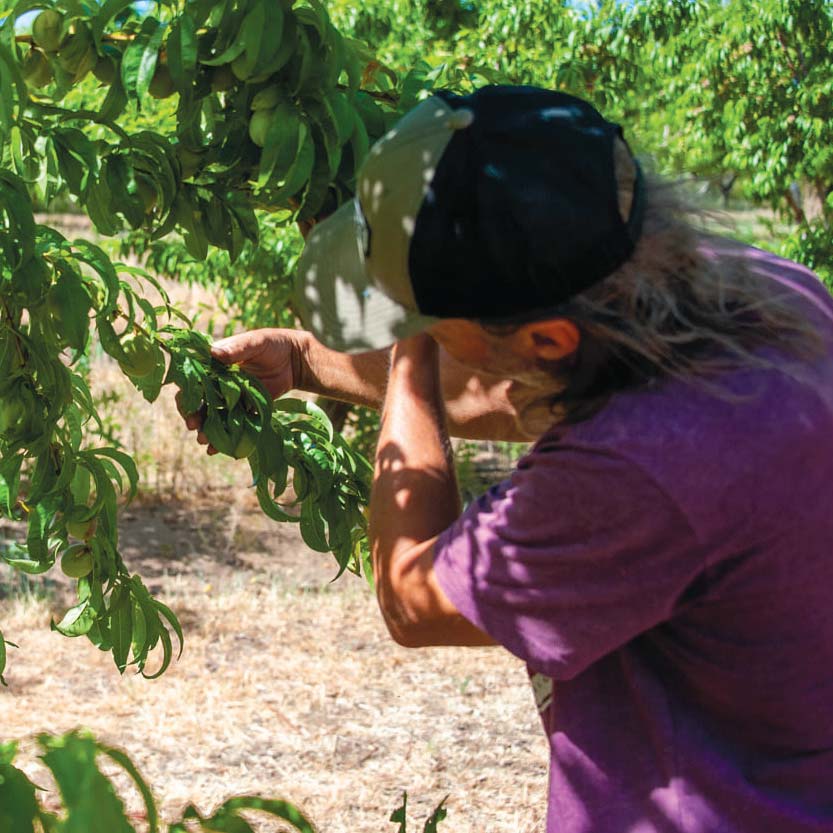
Erik and Julie Erickson own Hunter Orchards, in Grenada, just northwest of Mount Shasta, and they grow organic peaches, nectarines, apricots, apples, and pears, lavender, and heirloom pumpkins. Learn more about Hunter Orchards, including about their on-farm offerings, at hunterorchards.com and on their Facebook page: facebook.com/hunterorchards



